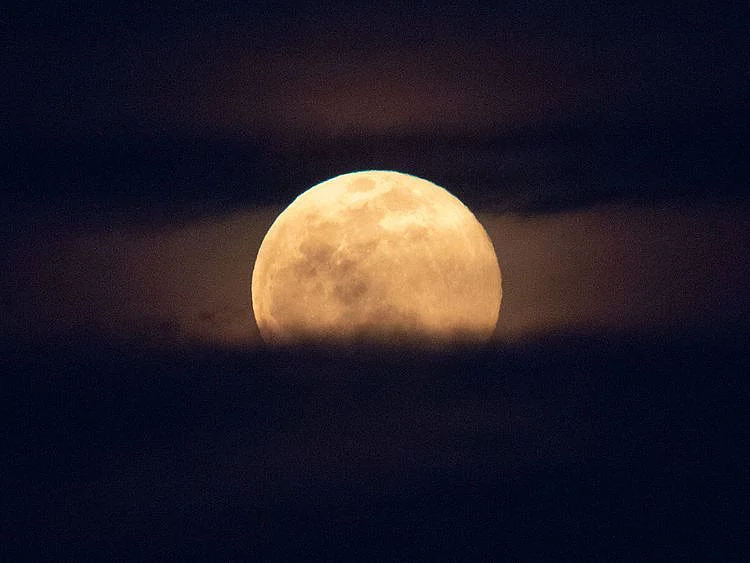Dubai: Stargazers from Saudi Arabia to North America are in for a celestial treat this week, as the so-called “Strawberry Moon” rises on June 11, accompanied by the rare phenomenon of a Great Lunar Standstill — last observed nearly two decades ago.
Astronomers explain that the Great Lunar Standstill occurs approximately every 18.6 years, when the tilt of the Moon’s orbit reaches its maximum.
This causes the Moon to rise and set at its most extreme northern and southern points on the horizon — a movement that will be visible to the naked eye in many parts of the world under clear skies.
This year, the event coincides with June’s full moon, commonly called the Strawberry Moon — a name given by Native American cultures to mark the season when wild strawberries ripen.
The Astronomy and Space Club in Saudi Arabia confirmed that the Moon will appear from its farthest southern point on the horizon, offering a rare opportunity for photographers and skywatchers to witness and document a sight that will not repeat until 2043.
Across the region, observatories and science centers are encouraging the public to look up. The Al Ojairi Scientific Center in Kuwait noted that the full Strawberry Moon will illuminate the night sky, marking just one highlight in a month rich with astronomical events.
Earlier in June, the Moon reached its farthest point from Earth — a phenomenon called "apogee" — and later in the month, on June 19, it will appear close to Saturn, passing just 23 degrees apart.
The coming weeks will also bring the summer solstice on June 21 — the longest day of the year and the official start of summer in the Northern Hemisphere — along with a close approach between Jupiter and the Sun, and a new moon in late June.
But for many, the main event will be the ethereal, slightly rose-tinted glow of the Strawberry Moon and the striking geometry of the Great Lunar Standstill — a rare double feature in the night sky that won’t return for another generation.
Huda Ata is an independent writer based in the UAE.
Sign up for the Daily Briefing
Get the latest news and updates straight to your inbox
Network Links
GN StoreDownload our app
© Al Nisr Publishing LLC 2026. All rights reserved.
